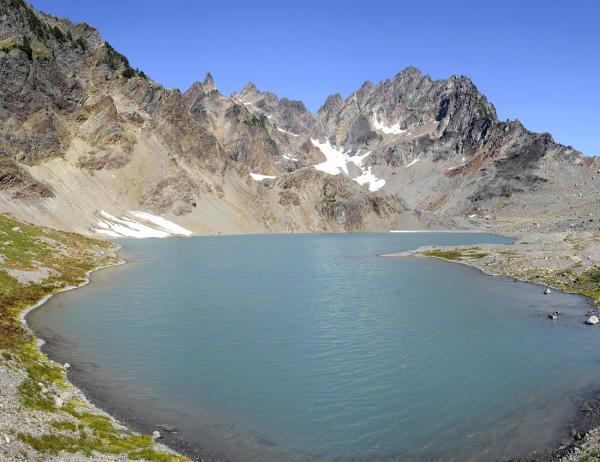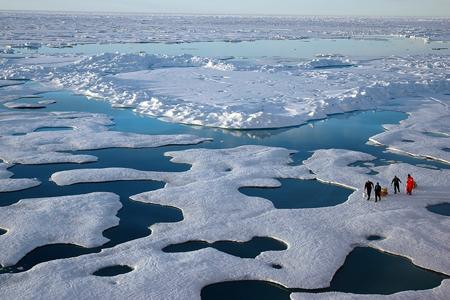'Every Day Is Earth Day': 5 Indigenous Insights on the Health of Our Mother

This year more than any other so far, the human habitat hangs in the balance.
As we celebrate Earth Day for the 45th time, the organizers are calling it the most important commemoration in history and urging everyone to sign an online petition entreating the world’s leaders to stop burning carbon.
“Earth Day’s 45th anniversary could be the most exciting year in environmental history,” the Earth Day Network says on its site. “The year in which economic growth and sustainability join hands. It’s our turn to lead. So our world leaders can follow by example.”
Rising sea levels threaten tribal nations in Louisiana and Pacific Northwest coastal nations, while drought ravages the Diné (Navajo) in the southwest and tribal nations in California—even as ice, permafrost and glaciers melt in Alaska, and glaciers vanish in the Pacific Northwest. Here, some noteworthy indigenous people respond to these issues and to the meaning of 2015’s Earth Day.
Bob Gough, Secretary of the Intertribal Council on Utility Policy
“The planet's Indigenous Peoples, and especially those still critically dependent on subsistence harvests from intact habitats, are the first and worst hit by weather extremes and trending climate impacts, and yet they have the least responsibility for. In the American Bayou, Native lands are … inundated by encroaching salt water from sea level rise with a land loss at a rate of one football field per hour! This Earth Day, let us commit as communities, in a rapidly changing world, to become good ancestors and give our youth the tools, the hope, the values, wisdom and direction to carry on!”
Margaret Hiza Redsteer (Crow Nation), U.S. Geological Survey Research Scientist on the Navajo Nation
“Climate change has intensified the challenges we face from drought, because we have lost the snowfall that used to supply water to rivers, lakes and springs, so that even when we do get moisture, it hasn't been adequate. Earth Day reminds us that we must work to help and heal the Earth and our land, we can't continue to take, and we have to find ways for the land to hold every drop of moisture we are lucky enough to get. We aren't just picking up trash anymore; we are organizing to plant native drought and sand tolerant plants, and to empower all of those in our community who will join us in the effort."
Related: ‘We’re Going to Be Out of Water’: Navajo Nation Dying of Thirst
Fawn Sharp, President, Quinault Indian Nation
"Everyone who lives on our Mother Earth has a responsibility to protect her. Everyone who drinks water in one form or another has a duty to assure it is pure. And every person who breathes God’s air is responsible for its quality."
RELATED: Fawn Sharp Discusses Steps to Stemming the Tide of Climate Change
Quinault Nation Declares State of Emergency After Taholah Seawall Breach
Rose High Bear (Deg Hit’an Dine or Alaskan Athabascan) of the indigenous group Wisdom of the Elders, and producer of climate films
“As Native people, we strive to practice Earth Day every day and also serve as a model to others. Life is changing for the First Peoples of the Arctic, and has been for the last 50 years. Traditional knowledge—our elders’ in-depth insights about our environment from years and decades and generations of their astute observations of Arctic ecosystems—are increasingly important to climate scientists.”

Professor Daniel Wildcat (Yuchi member of Muscogee [Creek] Nation), Director, Haskell Environmental Research Studies Center; Professor, American Indian Studies at Haskell Indian Nations University
“To me every day is Earth Day, every day is Thanksgiving Day, and every day is Indigenous Peoples’ Day. Many folks living in Indian Country recognize the inadequacy of setting aside one day a year—in our case the first Peoples of this land even get a month in U.S. schools and colleges—to honor and practice something everyone should do every day. These national events/celebrations remind our tribal nations of the great challenges they face in creating places in this carbon fueled industrially supported post-industrial consumer society, where our future generations can live in communities where folks participate in economic, political and cultural systems of life-enhancement. I think the great leaders of this century will be indigenous leaders who give thanks everyday for the gift of life we receive and the responsibilities we have to all our relations on this beautiful blue green planet.”
Read more at http://indiancountrytodaymedianetwork.com/2015/04/22/every-day-earth-day-5-indigenous-insights-health-our-mother-160074